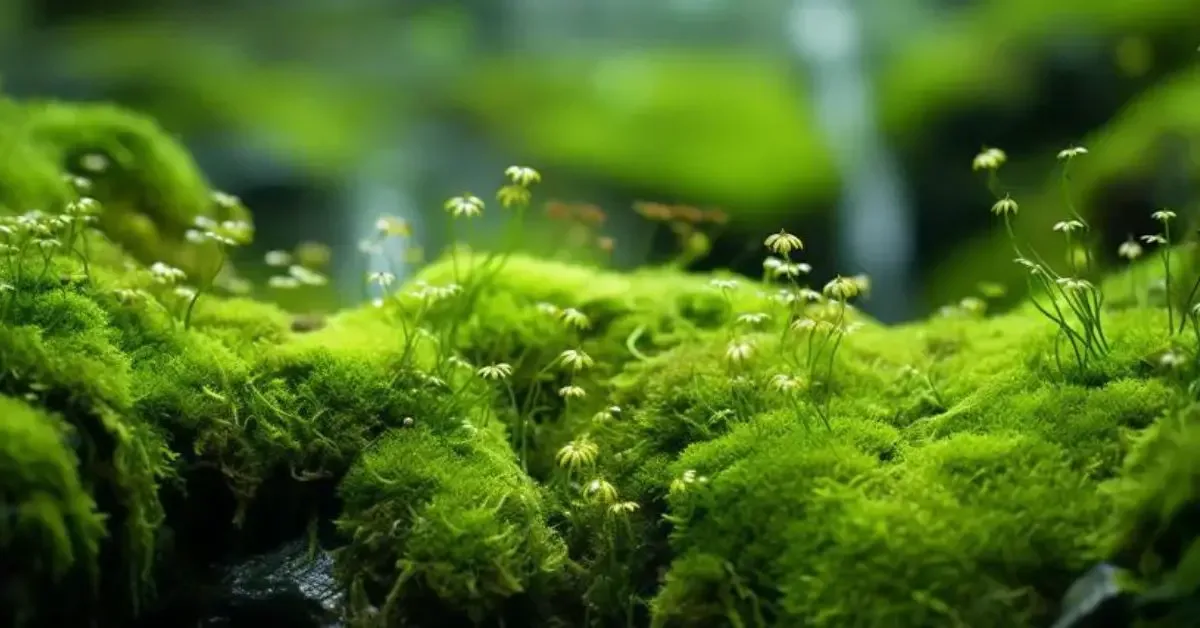Moss, often overlooked in the world of gardening, is a fascinating and beautiful plant that can transform any garden into a lush, green haven.
Unlike other garden plants, moss brings a unique texture and a sense of ancient, woodland charm to any space. Easy to grow and maintain, moss is perfect for creating that serene, green backdrop or as a groundcover in shady spots where other plants struggle.
Whether you’re a seasoned gardener or new to the green world, growing moss is a delightful and rewarding endeavor.
Benefits of Growing Moss
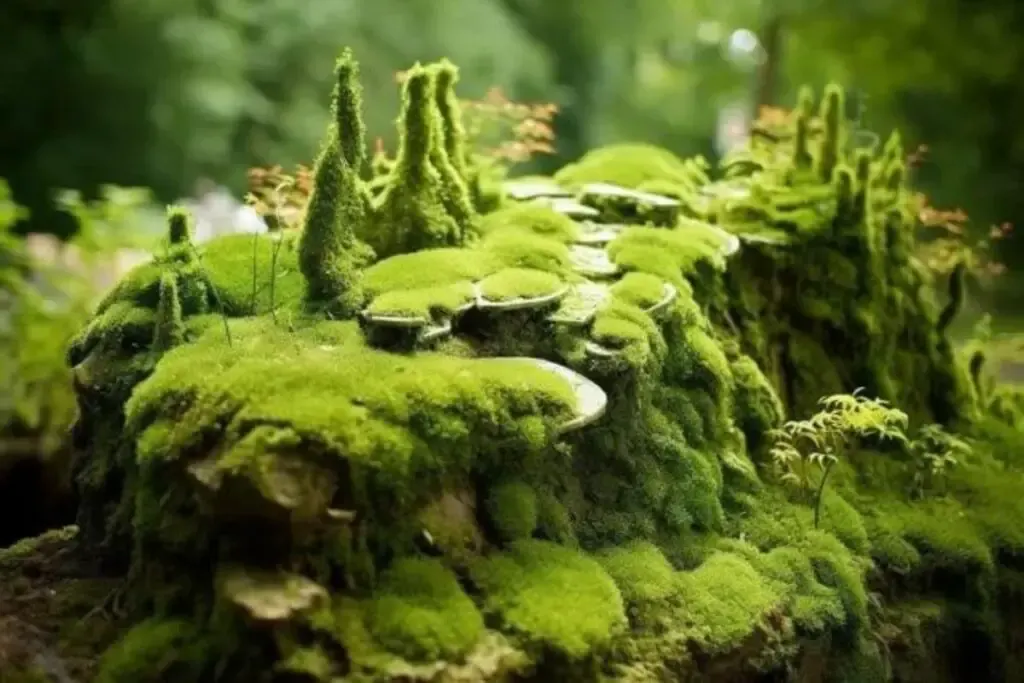
1. Erosion Control
Moss is excellent for stabilizing soil and preventing erosion, especially in sloped or uneven garden areas. Its dense mat-like structure holds soil in place, protecting it from being washed or blown away.
2. Low Maintenance
Moss is incredibly low-maintenance. It doesn’t require mowing, fertilizing, or deadheading, making it a great option for those looking for a fuss-free garden addition.
3. Environmental Benefits
Moss plays a vital role in the ecosystem. It helps in water purification and air quality improvement, acting as a natural filter. Plus, it provides a unique microhabitat for a variety of small insects and wildlife.
My Favorite Moss Varieties
There’s a surprising variety of mosses, each with its own unique qualities and beauty. From lush, velvety carpets to intricate, feathery fronds, there’s a type of moss for every garden style.
Here are three of my favorites:
1. Sheet Moss ‘Hypnum’
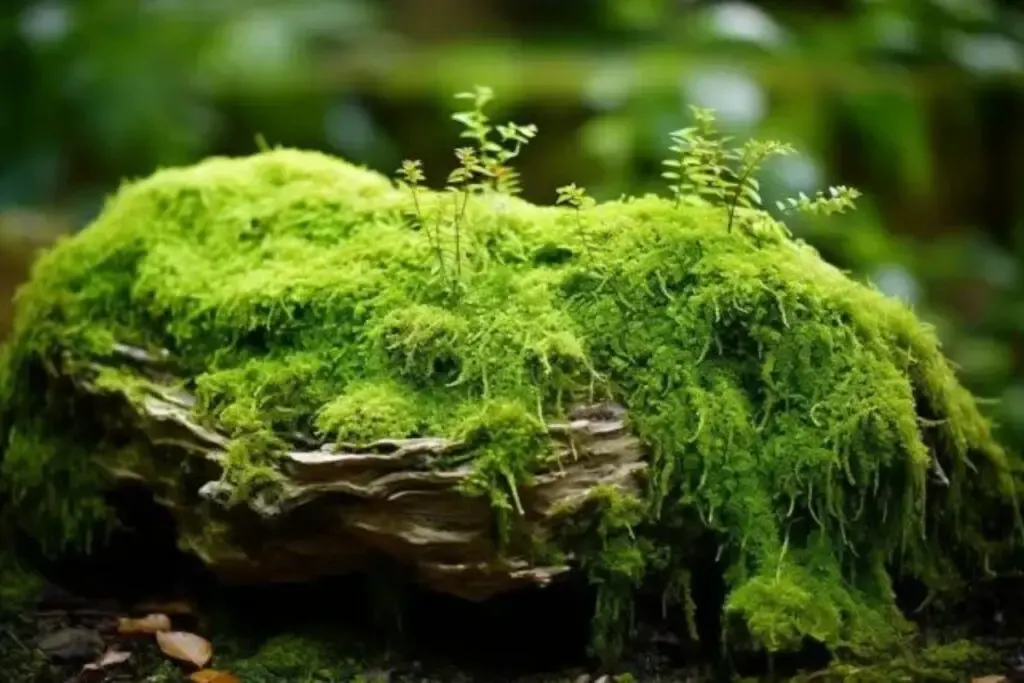
Known for its soft, carpet-like quality, Sheet Moss is perfect for covering large areas. It’s one of the easiest types to grow and maintain, making it ideal for beginners.
2. Hair Cap Moss (Polytrichum)
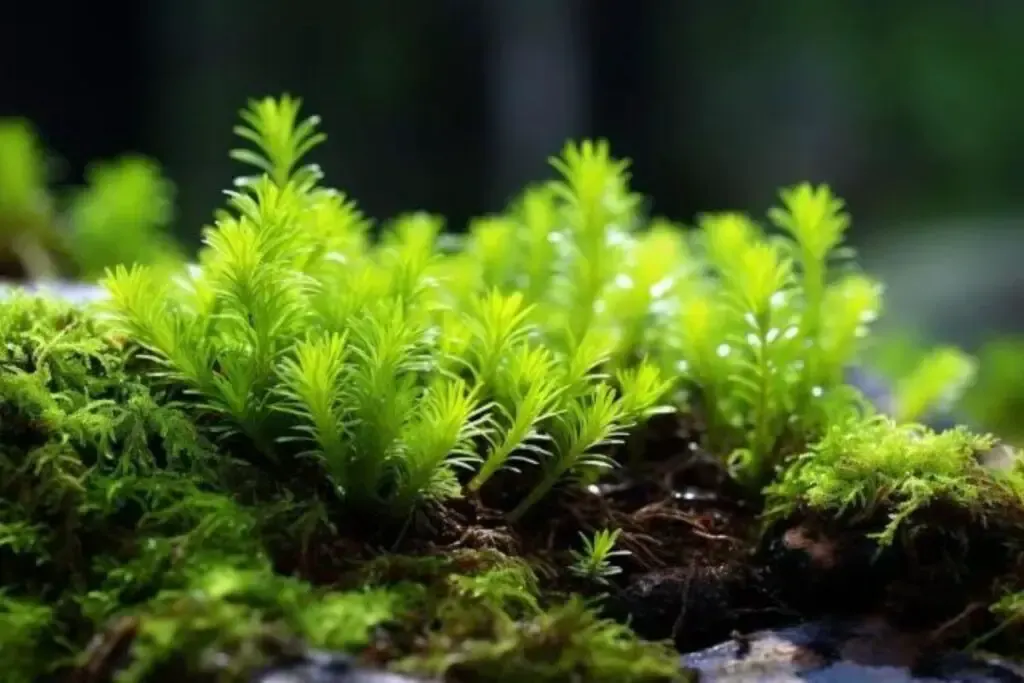
With its upright, star-shaped appearance, Hair Cap Moss adds an interesting texture to the garden. It’s a bit taller than other varieties, making it a great choice for adding depth and contrast.
3. Irish Moss (Sagina subulata)
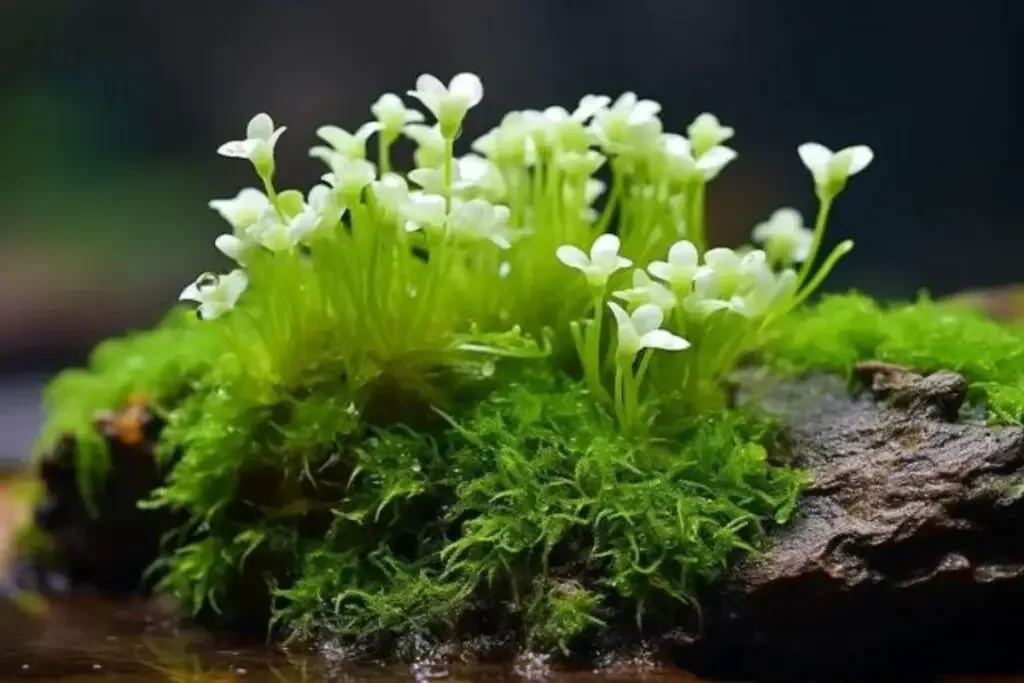
Although not a true moss, Irish Moss is popular for its fine, bright green foliage and tiny white flowers. It forms a dense, cushion-like mat and is perfect for filling in between stepping stones or in rock gardens.
Moss Care
Caring for moss is an exercise in simplicity and patience. These ancient plants require very little to thrive, yet they bring so much beauty and tranquility to your garden. Understanding their basic needs is key to successful moss cultivation.
Let’s explore the essentials of moss care to ensure your green carpet remains lush and vibrant.
Planting
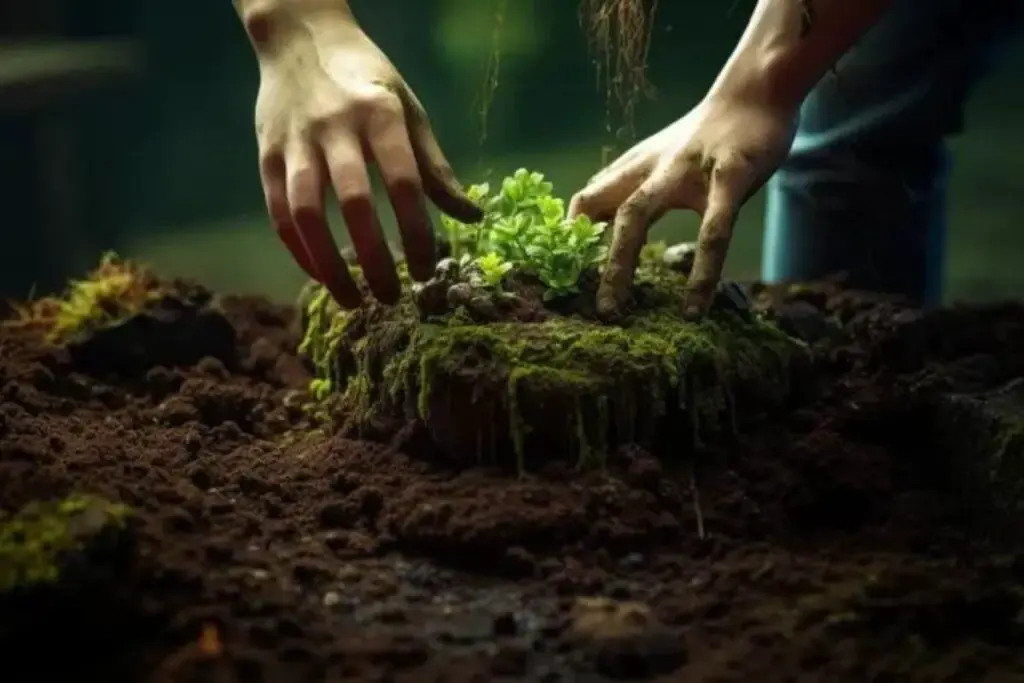
Planting moss is a unique process. Start by choosing a shady spot, as most mosses prefer minimal direct sunlight. Prepare the area by removing any weeds and debris, and ensure the surface is slightly rough to help the moss attach.
Gently press the moss into the soil, but don’t bury it. Keep the area moist until the moss establishes itself, which usually takes a few weeks.
Light
Moss thrives in low-light conditions, making it ideal for those shady areas of your garden where other plants struggle.
While some moss varieties can tolerate a bit of direct sunlight, most prefer dappled or full shade. Too much sunlight can dry out moss and inhibit its growth.
Soil
One of the great things about moss is that it’s not fussy about soil quality. It can grow on rocks, bare soil, and even on wood. However, slightly acidic soil tends to be more favorable for moss growth. Make sure the area is free of grass and other competing plants.
Water
Moss needs a consistent level of moisture to thrive. Regular misting or light watering will keep it healthy, especially during dry periods.
Unlike other plants, moss absorbs water through its leaves, so keeping the surrounding environment humid is key.
Temperature and Humidity
Moss is resilient across a range of temperatures, but it prefers a cool, humid environment. It’s less active in extreme heat or cold but will usually bounce back once conditions improve.
High humidity is ideal, so consider adding a water feature nearby or misting regularly to maintain moisture.
Fertilizer
Generally, moss doesn’t require fertilization. It gets most of what it needs from the air and rainwater. If you feel your moss could use a boost, a light application of a diluted, balanced, water-soluble fertilizer once a year is sufficient. However, be cautious with the quantity, as too much can harm the moss.
Pruning
Pruning moss is rarely necessary, but it can be useful for maintaining the shape and health of your moss garden.
Unlike other plants, moss won’t grow out of control or become leggy, but you might find yourself needing to tidy up edges or remove debris. The process is straightforward and requires only a gentle touch.
Propagating
Moss is incredibly easy to propagate, allowing you to expand your green carpet with minimal effort. The simplest method is division.
Gently pull apart a section of established moss and transplant it to a new area. Keep the newly planted section moist until it establishes. You can also blend moss with buttermilk or yogurt and spread it over a new area to encourage growth.
How to Grow Moss From Seed
Growing moss from “seed” is a bit of a misnomer, as mosses don’t produce seeds. Instead, they reproduce through spores. To grow moss from spores, you first need to collect spores from an existing moss plant.
Sprinkle these spores over a moist, shady area where you want the moss to grow. It’s a slower process than division, requiring patience as the spores germinate and eventually form a new patch of moss.
Growing in Pots
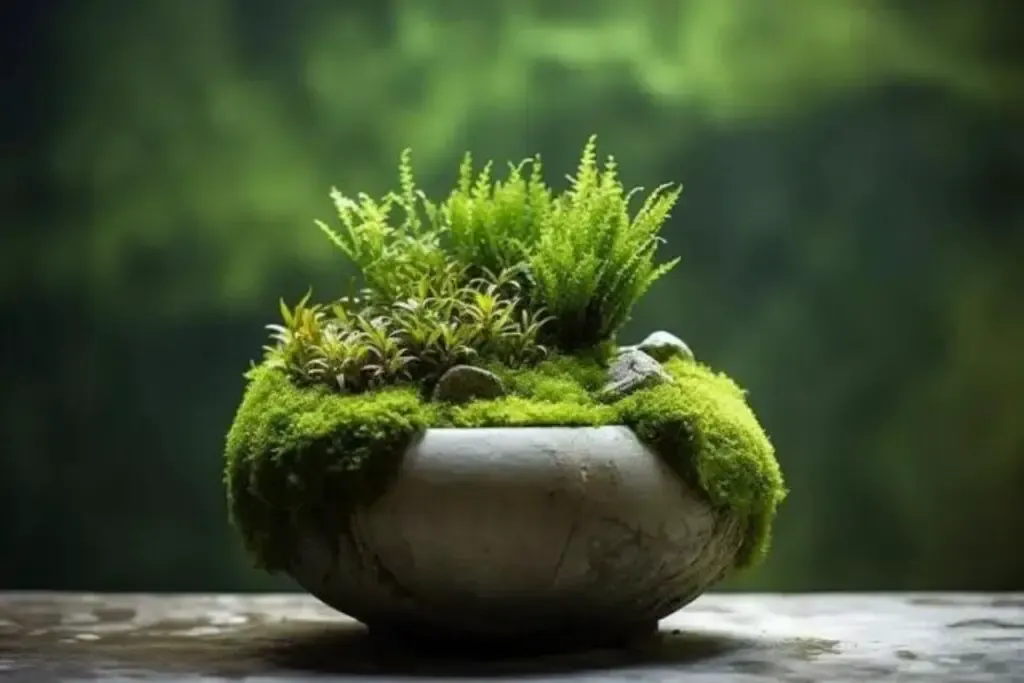
Growing moss in pots or containers can create beautiful, green accents for your indoor or outdoor spaces. The key is to ensure consistent moisture and avoid direct sunlight.
Choose shallow containers with good drainage and fill them with a suitable substrate (peat moss mixed with perlite works well).
Keep the container in a shaded area and mist regularly to maintain humidity. Moss in containers can dry out quickly, so it’s important to monitor the moisture level closely.
Overwintering
Mosses are hardy and resilient, often enduring winter conditions with ease. In fact, many mosses remain green and vibrant even under a blanket of snow. However, in extremely cold or dry climates, taking some precautions can help protect your moss.
Keep the area clear of heavy debris to prevent smothering, and if the climate is particularly dry, occasional misting on warmer days can help.
Remember, mosses are adapted to survive through various conditions, so they typically bounce back with the return of warmer weather.
Transplanting
Transplanting moss is a straightforward process. The best time to do this is during a moist, overcast day to prevent the moss from drying out.
Gently lift the moss from its current location, keeping as much of the base intact as possible. Prepare the new site by clearing debris and ensuring it’s moist.
Press the moss firmly into its new position and water it well. The moss should establish itself in its new location within a few weeks, provided it’s kept moist and shaded.
Common Pests & Diseases
Mosses are generally free from the common pests and diseases that afflict other garden plants. However, they can sometimes face issues:
- Slugs and Snails: These can sometimes feed on moss, especially in very moist environments. Natural deterrents or organic slug baits can help manage these pests.
- Moss Mites: While mostly harmless, in large numbers, they can cause moss to thin. They’re usually a sign of overly wet conditions, so improving drainage and reducing watering can help.
- Mold and Mildew: In overly damp or poorly ventilated areas, moss can develop mold or mildew. Ensuring good air circulation and avoiding waterlogging can prevent these issues.
Whether you’re creating a moss garden for its aesthetic appeal, its environmental benefits, or its low-maintenance nature, moss brings a unique and peaceful element to any space.
Remember, the key to successful moss cultivation lies in understanding its simple needs – moisture, shade, and a bit of patience. With these tips and tricks, you’re well on your way to nurturing a lush, vibrant moss garden that can be a source of tranquility and natural beauty for years to come.
Happy gardening!
